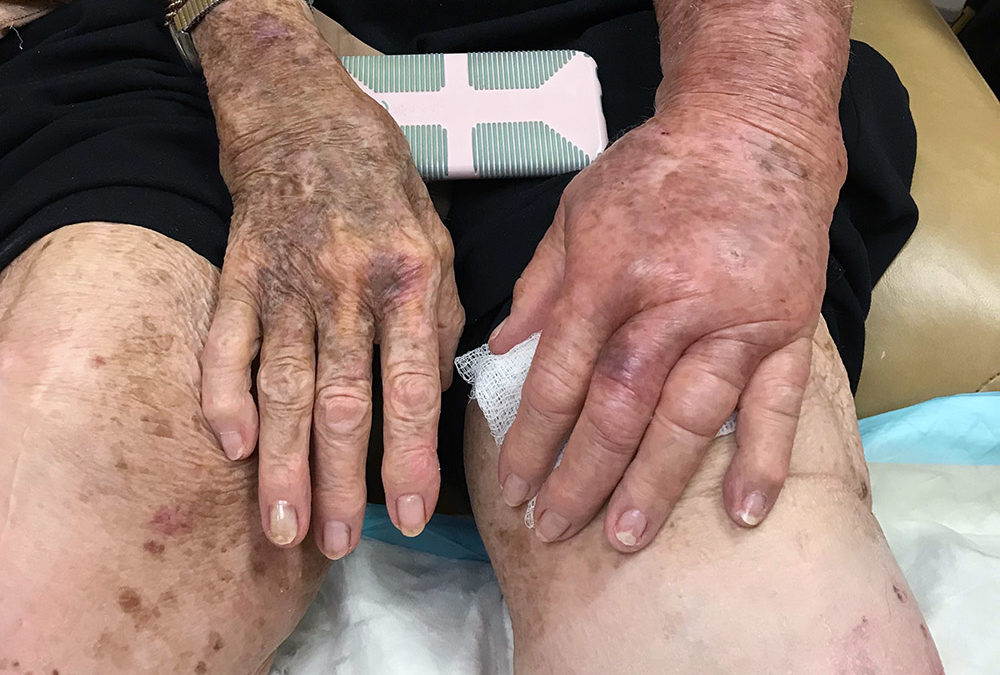I got my MIPS score back. I will blog about the details over time, but check out the image below of the “cost per beneficiary measure” which in Year One did NOT contribute to my composite MIPS score, but which was provided for me to review. I am a Family Practice physician. Since Wound Care isn’t a recognized subspecialty, Medicare doesn’t have any way to identify me as anything other than an FP. So, CMS looked at the amount of money spent on 47 of my patients compared to the average FP, and said, “You spend too much money on these patients compared to your peers.”

My per capita episode cost was over $58,000 and my “total per capita cost (TPCC)” was $24,306.80, which was so far above the highest benchmark rate that I was assigned a measure score of 3. There’s nothing I can do about this score because it’s entirely calculated by CMS. It didn’t hurt me in the 2017 reporting period. In 2018, this category will contribute 10% to my composite score.
I’m going to make several points about this in the coming weeks. I am going to discuss the importance of a specialty code in mitigating the TPCC, what I understand about how CMS picked the particular 47 cases or episodes that were used for this math, the crucial element of the Hierarchical Classification Code (HCC), and the bonus points available for coordinating the care of the complex patient.
In preparation for that, I’ll refer you back to my Cassandra blog about MIPS Year Two to review the math of MIPS and the big picture philosophically. However, to put the high cost of wound care into perspective, I thought I would depict the complex (and typical) wound care patient visually this way:
- The patient I have been seeing between her hospital admissions for a year who has chronic heart failure, slipping again into acute failure as her left arm fills with fluid. I spent 20 minutes calling her cardiologist and her daughter to arrange her re-admission to the hospital. She was only recently discharged. Keep in mind that hospital re-admissions within a certain time frame count against me under MIPS (just like they did under PQRS) because CMS thinks I’m her primary care doctor. She comes to the wound center because she is pouring lymphatic fluid from her legs, has a Charcot foot with an ulcer, and recently fell and created a bad non-healing gash on her knee. She’s had an open wound of one type or other for more than a year and if she isn’t in compression all the time, her legs just burst open.
- The patient I’ve been seeing twice a month for more than a year who has an above the knee amputation (AKA) on one side, and chronic lymphedema with a slow healing ulcer on the left ankle after a flap. He’s one of the few patients I’ve ever had successfully walking on an AKA prosthesis. Below is his bag of medications. I went through it and labeled what each medication was for in big letters that he can actually SEE. The average patient in a wound center takes 10 medications. How many are in this bag?

- The patient whose daughter showed me his appointment schedule for only one month. Note that with the exception of Independence Day, for the entire month of July, there were only 2 days she did not take him to at least one doctor’s appointment and sometimes two. He has dementia with unusual features and is undergoing multiple diagnostic studies, he’s got diabetes and a foot ulcer. I watched her crochet this entire blanket for her first grandchild while we healed his foot ulcer. He’s actually done well from the standpoint of his wound, but she’s headed to the Medical Center with him to see a new specialist and can’t work us into his social calendar anymore. We tried to estimate the number of hours she has spent in various waiting rooms as she worked on this blanket, but it’s in the hundreds.

Her handwritten caption says it all!

A VERY Full Appointment Calendar to Say the Least.
- The patient whose daughter keeps a spiral notebook to organize information on her complicated and very sick Mother who has an autoimmune disease on steroids, brittle diabetes, vertebral fractures and falls, and multiple non-healing wounds (doctor’s cards on left side, labs, studies and other pertinent documents on right).

Do you see NOW why saying “we heal everyone” is a terrible idea? Who is going to take care of these people when we can’t get paid to do it, because we said that everyone heals in 12 weeks? The proposed rule for the hospital outpatient payment system is out now. As only one example, CMS is proposing to create episodes of care for the use of cellular products – paying a lump sum for the treatment of a wound over, perhaps 12 weeks.
We need to tell the truth about these patients. They are incredibly sick, they take a lot of medications, and they have many co-morbid diseases. Data systems and registries that do not collect their co-morbid diseases and medications will not provide the data we need. Chronic wounds are a symptom of their diseases. The wounds that do heal (about half) do not heal in 12 weeks. And I have a lot more to say about that topic.

Dr. Fife is a world renowned wound care physician dedicated to improving patient outcomes through quality driven care. Please visit my blog at CarolineFifeMD.com and my Youtube channel at https://www.youtube.com/c/carolinefifemd/videos
The opinions, comments, and content expressed or implied in my statements are solely my own and do not necessarily reflect the position or views of Intellicure or any of the boards on which I serve.



